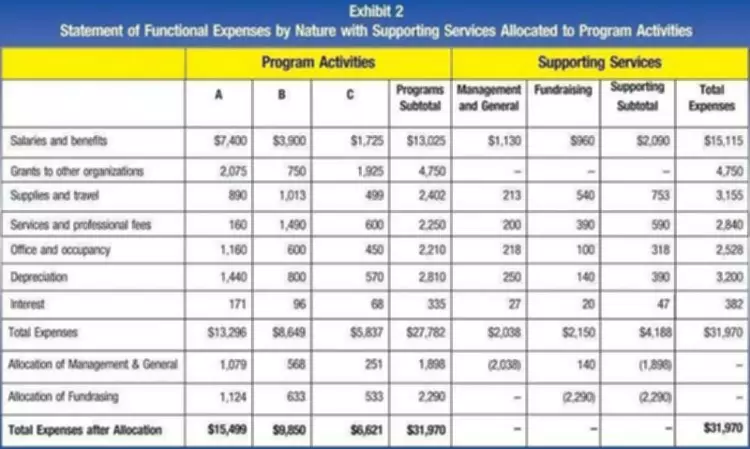Content

These are added to the fixed costs of $12,500 to get the flexible budget amount of $24,750. The advantage to a flexible budget is we can create a budget based on the ACTUAL level of production to give us a clearer picture of our results by comparing the flexible budget to actual results. This analysis would compare the actual level of activity so volume variances are not a factor and management can focus on the cost variances only.

A static budget is typically based on a fixed level of activity or output and does not change with changes in sales volume, production volume, or other measures of business activity. It is often created at the beginning of the budget period and is not adjusted as the period progresses. A static budget is useful for providing a baseline for planning and evaluating performance, but it may not be as accurate as a flexible budget. A company makes a budget for the smallest time period possible so that management can find and adjust problems to minimize their impact on the business. Everything starts with the estimated sales, but what happens if the sales are more or less than expected?
Financial and Managerial Accounting
Because of these seamless workflows (and because of the inherent adaptability), flexible budgets give way to more efficiency than their fixed budget counterparts. A flexible budget is usually designed to predict effects of changes in volume and how that affects revenues and expenses. In order to accurately predict the changes in costs, management has to identify the fixed costs and the variable costs. Fixed costs will be constant within relevant range of operations where the variable costs will continue to increase as production increases. Most flexible budgets use a percentage of projected revenue to account for variable costs rather than assigning a rigid numerical value at the start. Big Bad Bikes is planning to use a flexible budget when they begin making trainers.
- Similar scenarios exist with merchandising and manufacturing companies.
- A flexible budget is usually designed to predict effects of changes in volume and how that affects revenues and expenses.
- On the other hand, some overhead costs, such as rent, are fixed; no matter how many units you make, these costs stay the same.
- To ease the process, McFall shared several startup budgeting lessons he’s learned over the course of his 25-year career.
Managers use a technique known as flexible budgeting to deal with budgetary adjustments. A flexible operating budget is a special kind of budget that provides detailed information about budgeted expenses (and revenues) at various levels of output. It is also a useful planning tool for managers, who can use it to model the likely financial results at a variety of different activity levels. But two months into the fiscal year, a competitor closes its doors.
Review and improve your flexible budget regularly
That’s because flexible budgets require continual upkeep and maintenance — you’re constantly having to keep an eye out for fluctuations and then execute those changes as quickly as you can. While this isn’t a reason to avoid flexible budgeting altogether, it’s good to keep in mind as you consider how and when to implement this kind of budgeting strategy. If your company flexible budget example regularly conducts a flux analysis, syncing this process with your flexible budget creation can help save time. This flexible budget is unchanged from the original (static budget) because it consists only of fixed costs which, by definition, do not change if the activity level changes. A flexible budget is a budget that changes based on your actual production or revenue.
What is known as static budget?
A static budget can be defined as the kind of budget that anticipates all revenue and expenses over a particular period in advance.
Unlike a static budget, it adjusts your original budget projection in using your actual sales or revenue. With a flexible budget, it’s easy to show that while costs for a month might have been much higher than budgeted, so were sales – justifying the increase. You can also study the monthly adjustments and notes to more accurately plan for future costs. Creating a flexible budget begins with assigning all static costs a fixed monthly value, and then determining the percentage of revenue to assign to your variable costs. Let us consider the following information regarding the costs expected to be incurred by a company in the upcoming accounting period. The company wants to prepare based on a scheduled activity level of 70% of the production capacity.
Static Budgets vs. Flexible Budgets
Typically, the machine hours are between 4,000 and 7,000 hours per month. Based on this information, the flexible budget for each month would be $40,000 + $10 per MH. Then, upload the final flexible budget for the completed period into your accounting system so you can compare it with actual expenses through a variance analysis(opens in new tab). The columns would continue below with fixed and variable expenses, allowing you to see how your net profit changes based on changes in actual production and revenue. Flexible budgets do not fix variances, they help to better plan for the future.
The more sophisticated relative of the static budget model, a flexible budget allows for change, and as we’ve said – business can be unpredictable. The last best practice for using a flexible budget is to review and improve your flexible budget regularly, based on your experience and feedback. You can evaluate the accuracy and relevance of your budget drivers, formulas, rates, and costs, and make adjustments or revisions as needed.
Each unit will bring in a net profit of $50, so the net profit per month will be 100 X 50, or $5,000. All of the different budget models have their benefits and drawbacks – even flexible budgets…as amazing as they sound. Static budgeting is constrained by the ability of an organization to accurately forecast its needed expenses, how much to allocate to those costs and its operating revenue for the upcoming period. For example, under a static budget, a company would set an anticipated expense, say $30,000 for a marketing campaign, for the duration of the period. It is then up to managers to adhere to that budget regardless of how the cost of generating that campaign actually tracks during the period. It’s most common to update forecasted line items in a flexible budget following a monthly review of total costs and top-line growth.
This flexibility allows management to estimate what the budgeted numbers would look like at various levels of sales. A flexible budget is typically created by identifying the various costs and expenses that vary with changes in activity levels and calculating the expected cost or expense for each level of activity. We can calculate the flexible budget for any level https://www.bookstime.com/ of activity using these figures. Leed Company prepares a flexible budget for 70%, 80%, 90% and 100% capacity. Notice how the variable costs change with volume but the fixed costs remain the same. Flexible budgets are essentially budgets that can be adjusted depending upon revenue and cost changes throughout the fiscal year, accounting for expected unpredictability.